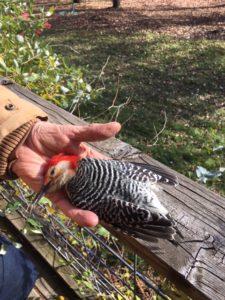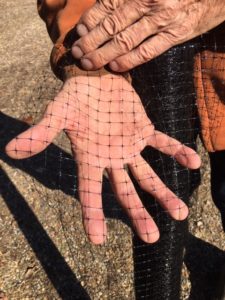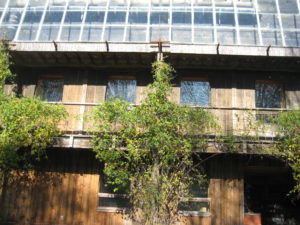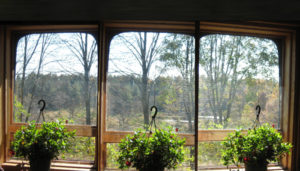Window Birds
It has been recognized for decades that windows create a high mortality rate amongst birds. They see a mirror-like reflection on the surface of the glass, of the sky and the landscape that is actually behind them, and crash into it at normal flight speed. The autumn 2019 issue of “Living Bird,” the magazine of the Cornell Laboratory of Ornithology, estimates the annual window-glass death toll to be in the hundreds of millions for just the US and Canada (pg 56).
At our home in western Johnson County, we have had occasional fatal bird strikes on our glass for decades. The greatest incidence is on windows on the south-facing upper floor, perhaps because it is most fully exposed to the sun and therefore has more sky reflection hours.
During this time, I have attempted the usual recommended deterrents, including falcon decals and white dot patterns, and these have made little improvement. So I’ve let the problem slide, not having any great ideas.
But October 29 became a deadly day and a call to action. The morning was cool and cloudy, and we were surrounded by robins, I suppose we were in the midst of a migration. We could look out any window and see a hundred. Their activity level was normal. But midday the clouds vanished, it warmed up and turned into a spectacular brilliant autumn day. The bird activity level accelerated and they were like a bunch of kids spilling out of the classroom for recess, with a lot of high-speed racing around.

The window-kill woodpecker.

The “deer netting” product.
Barb had devoted the afternoon to reading in the sunny south-facing living room, and she counted eight solid bird strikes on the glass near her, and none elsewhere on the house. I picked up a total of four dead robins and didn’t know what happened to the other four. The following morning, a red-bellied woodpecker fatally flew into one of the same windows.
We probably contributed to the problem by recently cleaning all the windows and inadvertently making them better mirrors.
This avian carnage was unacceptable and it was time to try something else. My latest attempt, next day, involved hanging curtains of fine “deer netting” over windows, which is very lightweight. It is just stapled to 1”x1” sticks that are held in place above each window with two screws.
From a distance, the netting is not very visible and I’m hoping that the sharp-eyed birds will spot it in time to turn their flight path away. The curtain hangs free of the glass by several inches and the slightest breeze gives it motion and it becomes somewhat reflective, sorta like ripples on water.

The two upper center windows are already meshed, the two outer ones are not. Hardly noticeable from a distance. The solar glass panes above do not invite bird strikes.
From the inside, whether you notice the mesh depends especially upon the angle of your view:

The same inside view at three different angles, none of which obscure our vision very much
So far, the main “problem” is that occasionally the wind will blow the mesh curtain onto the adjacent rough-sawn cedar siding and it will get caught there awhile until the wind frees it again. Small problem.
I will keep tinkering with this window mesh and get back to you next year with whatever I’ve learned that might be useful to deter bird/window collisions. In the meantime, try it out at your place. The mesh is incredibly inexpensive, a $15-20 roll measures 7’x100’, and is available at most places that sell landscaping supplies.
And if you have already worked out a better method, tell us about it. Almost every long-term study in the US, whether it be by banding, radar, feeder watch, or Christmas count, shows native bird populations in decline. We all need to do what we can, and we all use windows. Get creative!


